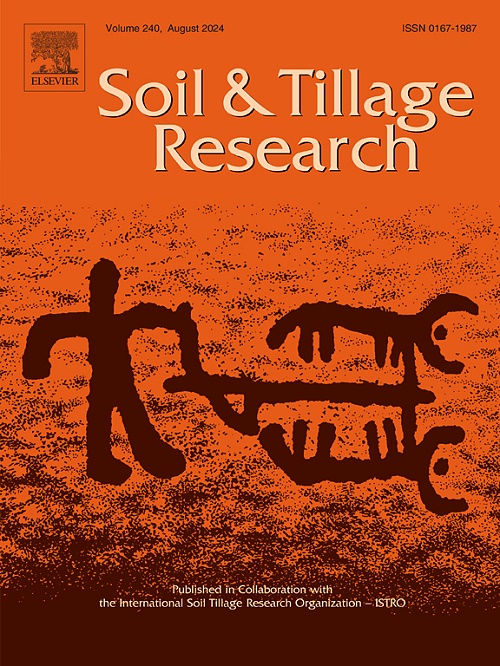不同耕作、施肥和石灰处理下基于个体和集合机器学习比较评价的土壤穿透阻力预测
IF 6.8
1区 农林科学
Q1 SOIL SCIENCE
引用次数: 0
摘要
本研究评估了集成机器学习在多重耕作、施肥和石灰处理下的土壤穿透阻力预测,可能减少耗时的田间采样。2020年至2023年期间,在克罗地亚大陆的两个地点进行了实地调查,在2020年和2021年期间,每个地点总共采集了1458个样本,2023年采集了972个样本。随机森林(RF)、立体主义(CUB)、支持向量回归(SVR)和贝叶斯正则化神经网络(BRNN)四种机器学习方法及其集合,对每种地点和年份组合进行10次重复的10倍交叉验证。与本研究评估的四种单独的机器学习模型相比,集成机器学习模型的预测精度更高,R2值为0.681-0.896。在所考察的协变量中,测土深度、采样年份(DOY)和耕作对最佳集合模型的影响最大,而石灰对土壤渗透阻力预测的影响有限。这些结果表明,集成机器学习提供了一种稳定、准确的土壤渗透阻力预测方法,可以减少未来实地调查活动的劳动力需求。本文章由计算机程序翻译,如有差异,请以英文原文为准。
Soil penetration resistance prediction based on a comparative evaluation of individual and ensemble machine learning under varying tillage, fertilization and liming treatments
This study evaluated ensemble machine learning for soil penetration resistance prediction under multiple tillage, fertilization and liming treatments, potentially reducing time-consuming field sampling. Fieldwork was conducted between 2020 and 2023 at two locations in continental Croatia, resulting in a total of 1458 samples per location during 2020 and 2021, and 972 samples in 2023. Four individual machine learning methods, including Random Forest (RF), Cubist (CUB), Support Vector Regression (SVR) and Bayesian Regularized Neural Networks (BRNN), and their ensemble were evaluated using 10-fold cross-validation in 10 repetitions for each combination of locations and years. The ensemble machine learning model achieved superior prediction accuracy in comparison to the four individual machine learning models evaluated in the study, with R2 values of 0.681–0.896. Among covariates examined, soil measurement depth, day of year (DOY) of sampling and tillage were the most impactful for the optimal ensemble model, while liming had a limited effect on the soil penetration resistance prediction. These results suggest that ensemble machine learning provided a stable and accurate soil penetration resistance prediction approach, which could reduce labor requirements of future fieldwork campaigns.
求助全文
通过发布文献求助,成功后即可免费获取论文全文。
去求助
来源期刊

Soil & Tillage Research
农林科学-土壤科学
CiteScore
13.00
自引率
6.20%
发文量
266
审稿时长
5 months
期刊介绍:
Soil & Tillage Research examines the physical, chemical and biological changes in the soil caused by tillage and field traffic. Manuscripts will be considered on aspects of soil science, physics, technology, mechanization and applied engineering for a sustainable balance among productivity, environmental quality and profitability. The following are examples of suitable topics within the scope of the journal of Soil and Tillage Research:
The agricultural and biosystems engineering associated with tillage (including no-tillage, reduced-tillage and direct drilling), irrigation and drainage, crops and crop rotations, fertilization, rehabilitation of mine spoils and processes used to modify soils. Soil change effects on establishment and yield of crops, growth of plants and roots, structure and erosion of soil, cycling of carbon and nutrients, greenhouse gas emissions, leaching, runoff and other processes that affect environmental quality. Characterization or modeling of tillage and field traffic responses, soil, climate, or topographic effects, soil deformation processes, tillage tools, traction devices, energy requirements, economics, surface and subsurface water quality effects, tillage effects on weed, pest and disease control, and their interactions.
 求助内容:
求助内容: 应助结果提醒方式:
应助结果提醒方式:


